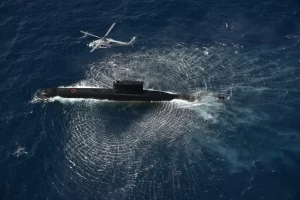The Air Force Common Admission Test (AFCAT) is a critical exam for aspirants aiming to join the Indian Air Force. One of the significant areas of general knowledge tested in this exam is geography, specifically focusing on important straits and international borders. Understanding these geographical features is essential not only for the AFCAT but also for enhancing your overall geopolitical awareness.
AFCAT 2 2024 Exam Static GK Important Straits and International Borders
Important Straits
1. Strait of Hormuz
- Location: Between the Persian Gulf and the Gulf of Oman.
- Significance: One of the world’s most strategically important chokepoints, it is a vital transit route for oil shipments from the Middle East.
2. Strait of Malacca
- Location: Between the Malay Peninsula (Malaysia) and the Indonesian island of Sumatra.
- Significance: One of the busiest maritime trade routes, it connects the Indian Ocean with the Pacific Ocean via the South China Sea.
3. Bosphorus Strait
- Location: Separates the European part of Turkey from its Asian part, connecting the Black Sea with the Sea of Marmara.
- Significance: Critical for the passage of naval and commercial vessels between the Black Sea and the Mediterranean Sea.
4. Gibraltar Strait
- Location: Between Southern Spain and Northern Morocco.
- Significance: Connects the Atlantic Ocean with the Mediterranean Sea, playing a crucial role in maritime navigation.
5. Bering Strait
- Location: Between Russia and Alaska.
- Significance: Connects the Arctic Ocean with the Bering Sea and separates the continents of Asia and North America.
6. Dover Strait
- Location: Between the UK and France.
- Significance: Narrowest part of the English Channel, vital for maritime traffic between the North Sea and the Atlantic Ocean.
7. Sunda Strait
- Location: Between the Indonesian islands of Java and Sumatra.
- Significance: Connects the Java Sea with the Indian Ocean, significant for regional trade.
8. Palk Strait
- Location: Between India and Sri Lanka.
- Significance: Separates Tamil Nadu (India) from the Jaffna District (Sri Lanka), important for regional navigation and fishing.
Important International Borders
1. India-Pakistan Border
- Length: Approximately 3,323 kilometers.
- Significance: Known as the Radcliffe Line, it has been a sensitive and highly militarized border since the partition of India in 1947.
2. India-China Border
- Length: Approximately 3,488 kilometers.
- Significance: Known as the Line of Actual Control (LAC), it traverses through the Himalayan region and has been the site of various border disputes.
3. USA-Mexico Border
- Length: Approximately 3,145 kilometers.
- Significance: One of the most frequently crossed international borders in the world, significant for trade and migration.
4. Russia-China Border
- Length: Approximately 4,209 kilometers.
- Significance: One of the longest international borders, important for bilateral relations and trade between the two major countries.
5. Brazil-Argentina Border
- Length: Approximately 1,261 kilometers.
- Significance: This border is vital for the economic integration within the South American region.
6. France-Germany Border
- Length: Approximately 451 kilometers.
- Significance: Central to European history, this border has seen numerous changes and conflicts over centuries.
7. North Korea-South Korea Border
- Length: Approximately 248 kilometers.
- Significance: Known as the Korean Demilitarized Zone (DMZ), it is one of the most fortified borders in the world, dividing the Korean Peninsula.
8. Egypt-Israel Border
- Length: Approximately 208 kilometers.
- Significance: Established following the Egypt-Israel peace treaty, it is crucial for the security and diplomatic relations in the Middle East.
Conclusion
For the AFCAT 2 2024 exam, it is crucial to have a solid understanding of these important straits and international borders. These geographical features play significant roles in global trade, security, and international relations. Thorough knowledge of their locations, significance, and historical context will not only help you in the exam but also enhance your overall understanding of global geography and geopolitics.
Preparing for these topics with maps, current affairs updates, and related historical events will provide a comprehensive grasp necessary to tackle questions in the AFCAT exam effectively.




















